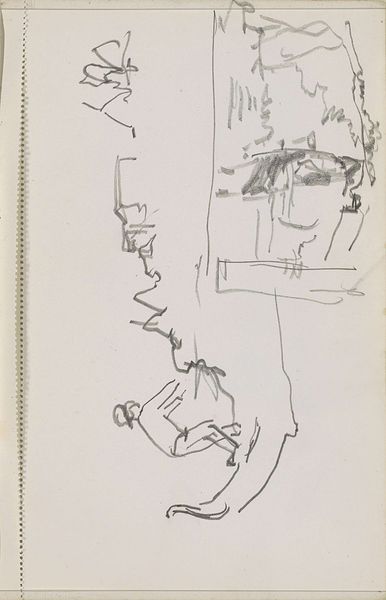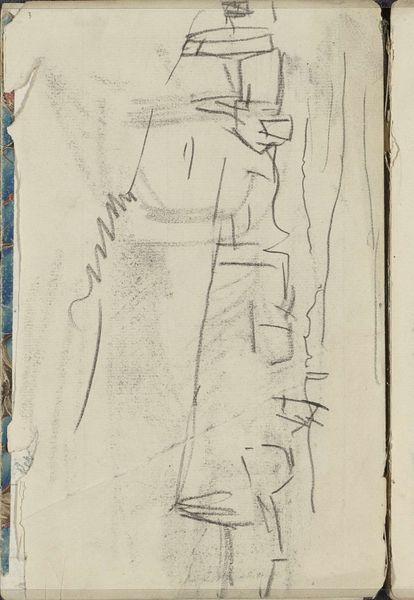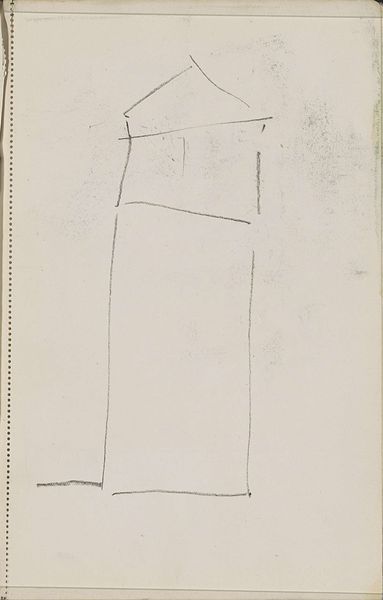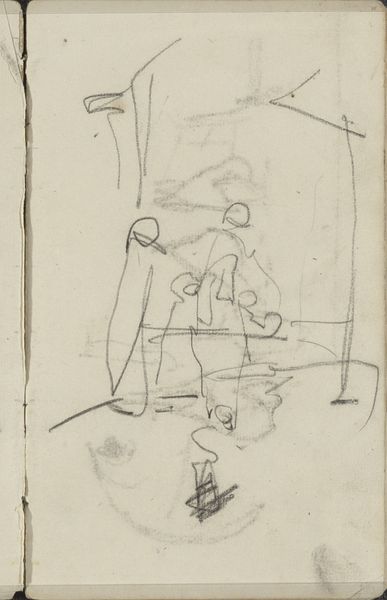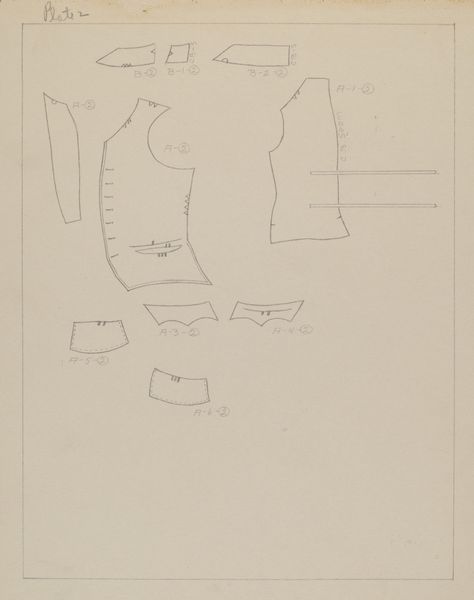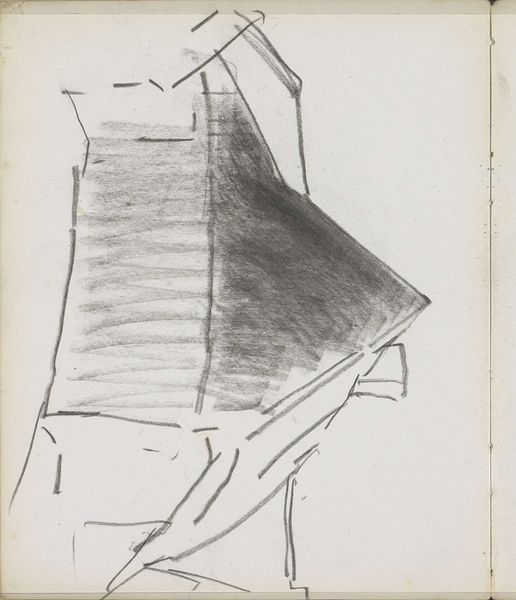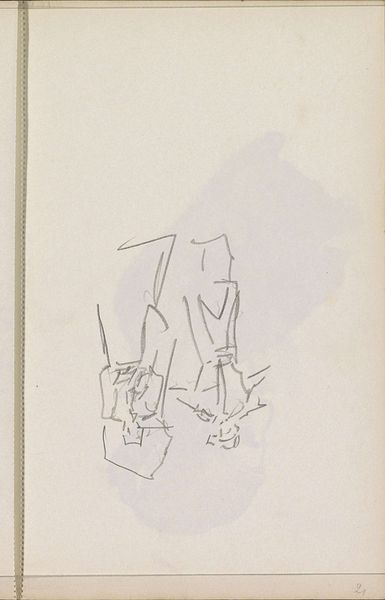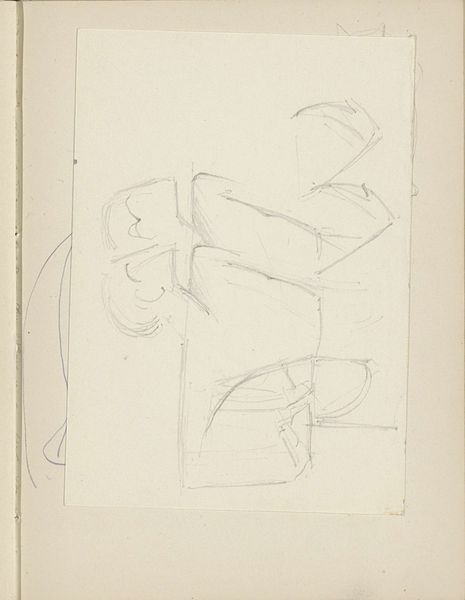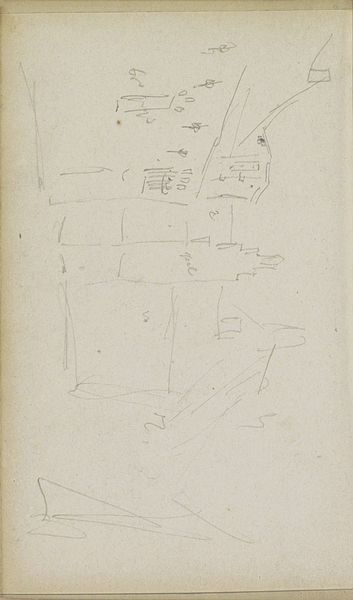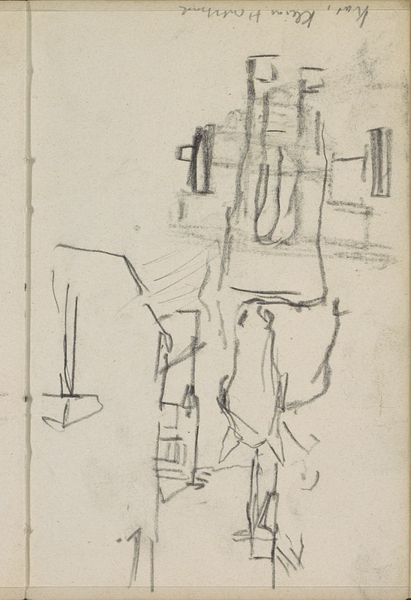
drawing, pen
#
portrait
#
drawing
#
figuration
#
line
#
pen
Dimensions: 24 x 18 cm
Copyright: Benny Andrews,Fair Use
Editor: This is Benny Andrews's pen drawing "Chessmen #2 (Study for Trash)" from 1971. The figures outlined by spare lines feel isolated, even though they are seated together on the same bench. What do you see in this work? Curator: I see a poignant commentary on societal marginalization. Andrews often explored the lived experiences of the dispossessed. Notice how he renders these figures with stark outlines, almost like shadows, devoid of internal detail. The cross on one figure suggests the complexities of faith and its potential solace within oppressive systems. Consider, how might these "chessmen" represent the pawns of society? Editor: That's interesting. They could be symbolic of the working class maybe? The figure on the left has overalls and seems to be sitting lower than the others. Curator: Precisely. Andrews, influenced by the Civil Rights movement, used art as a platform for social justice. The deliberate ambiguity invites us to contemplate the unseen forces that shape their reality. What about the title, “Study for Trash”? Does that evoke certain readings related to value, class, or expendability? Editor: It does make me wonder if the chessmen are literally “trash” or discarded people. Maybe a commentary on the wastefulness of society. Curator: It also touches on race, doesn't it? It is important to contextualize his works with respect to broader, intersectional narratives around identity, gender, and politics. Consider the artistic interventions made by Black artists challenging power structures. Where might you locate Andrew's art within such dialogues? Editor: That makes sense. It’s as though Andrews invites us to reflect on the intersections of race, faith, and class in 1970s America. Thank you, that gave me a lot to think about! Curator: My pleasure. Hopefully, our discussion encourages people to explore the layers of meaning embedded in Andrew’s work and to use art as a lens through which to view critical social issues.
Comments
No comments
Be the first to comment and join the conversation on the ultimate creative platform.
